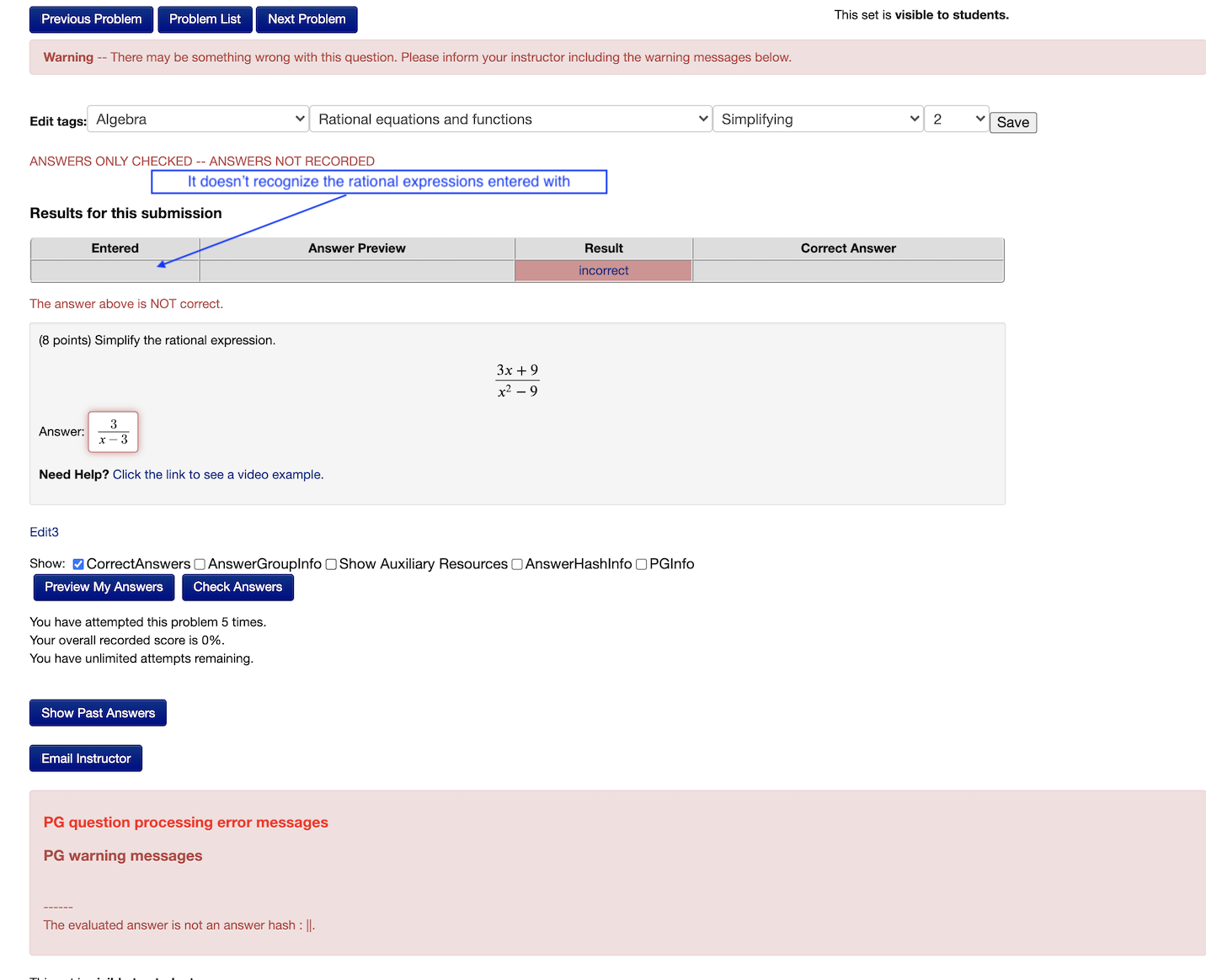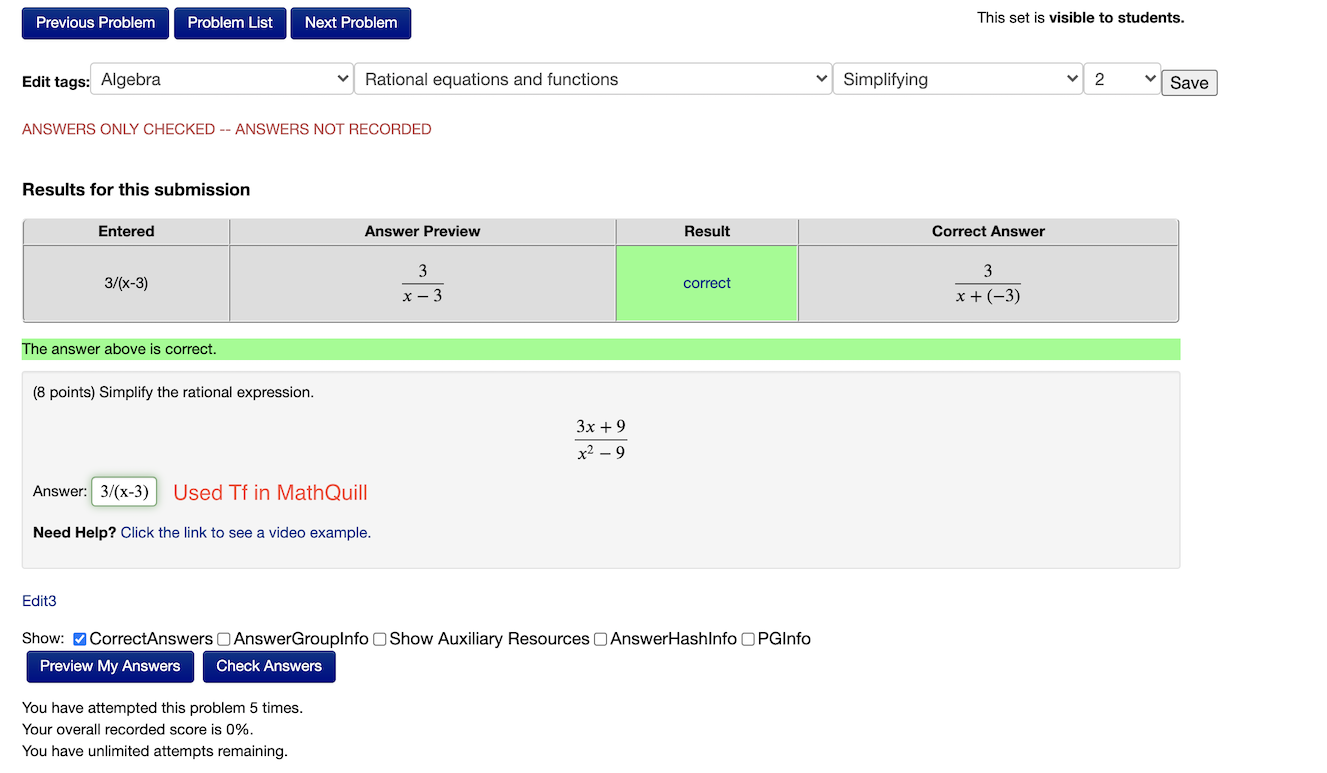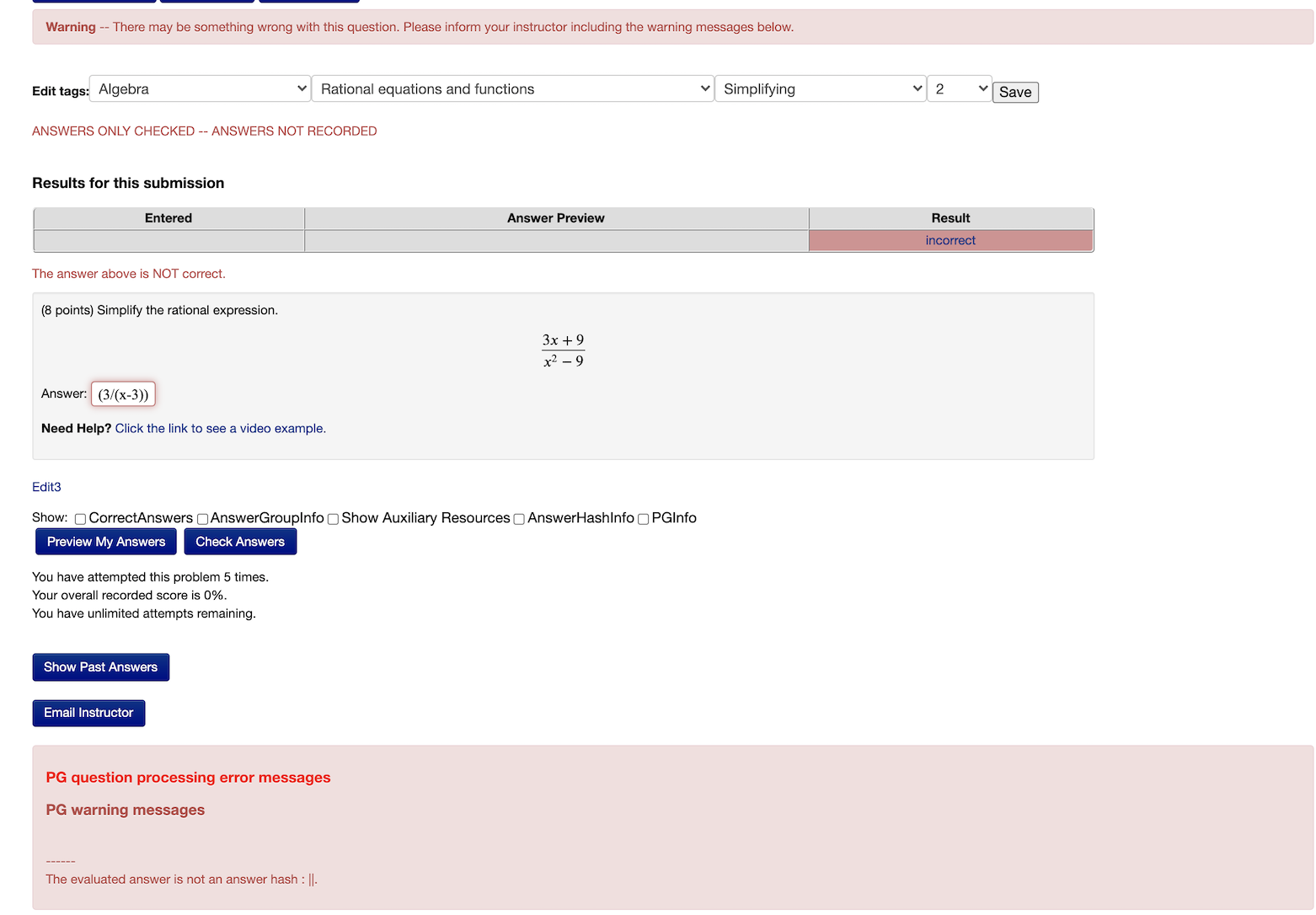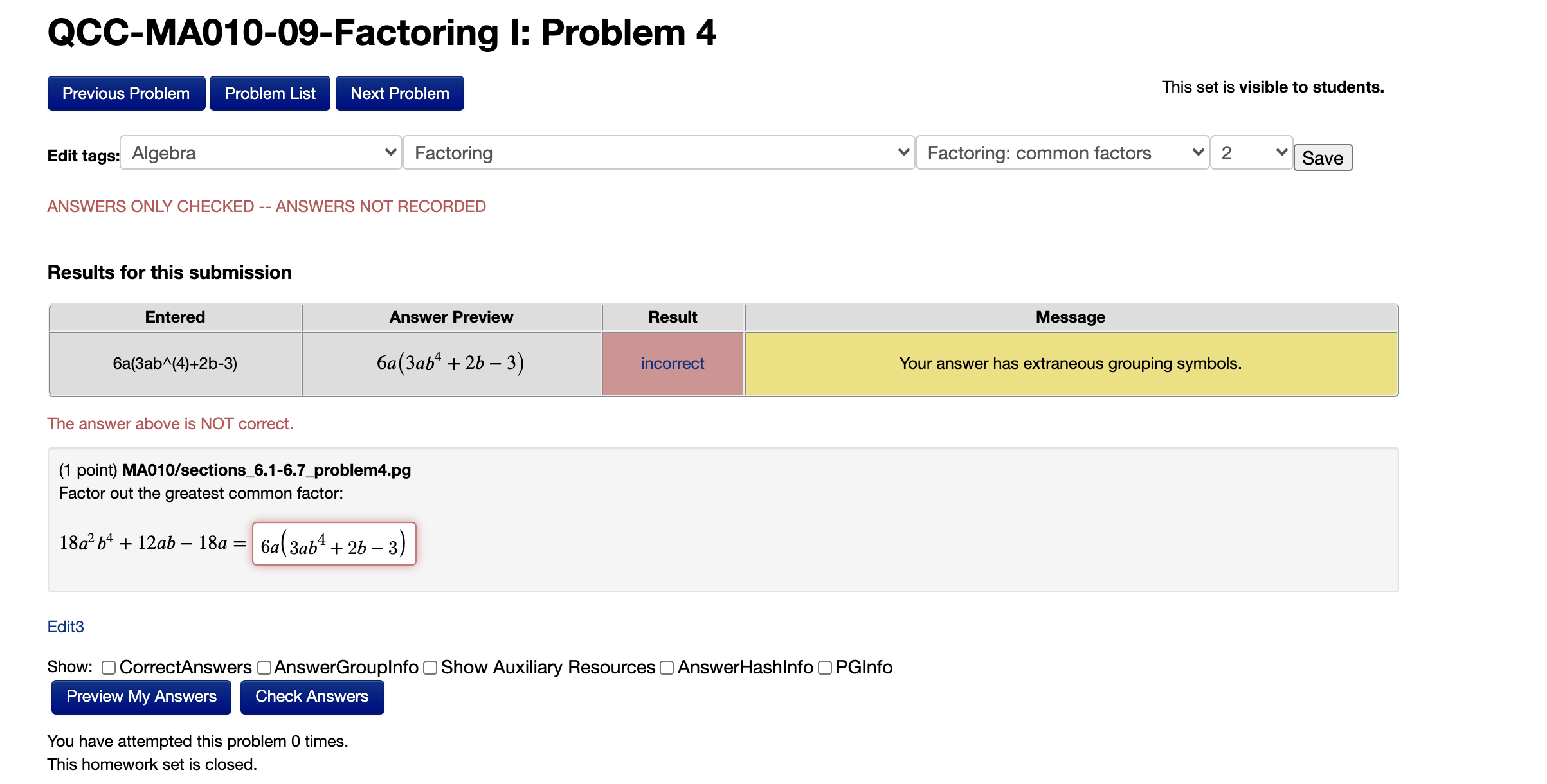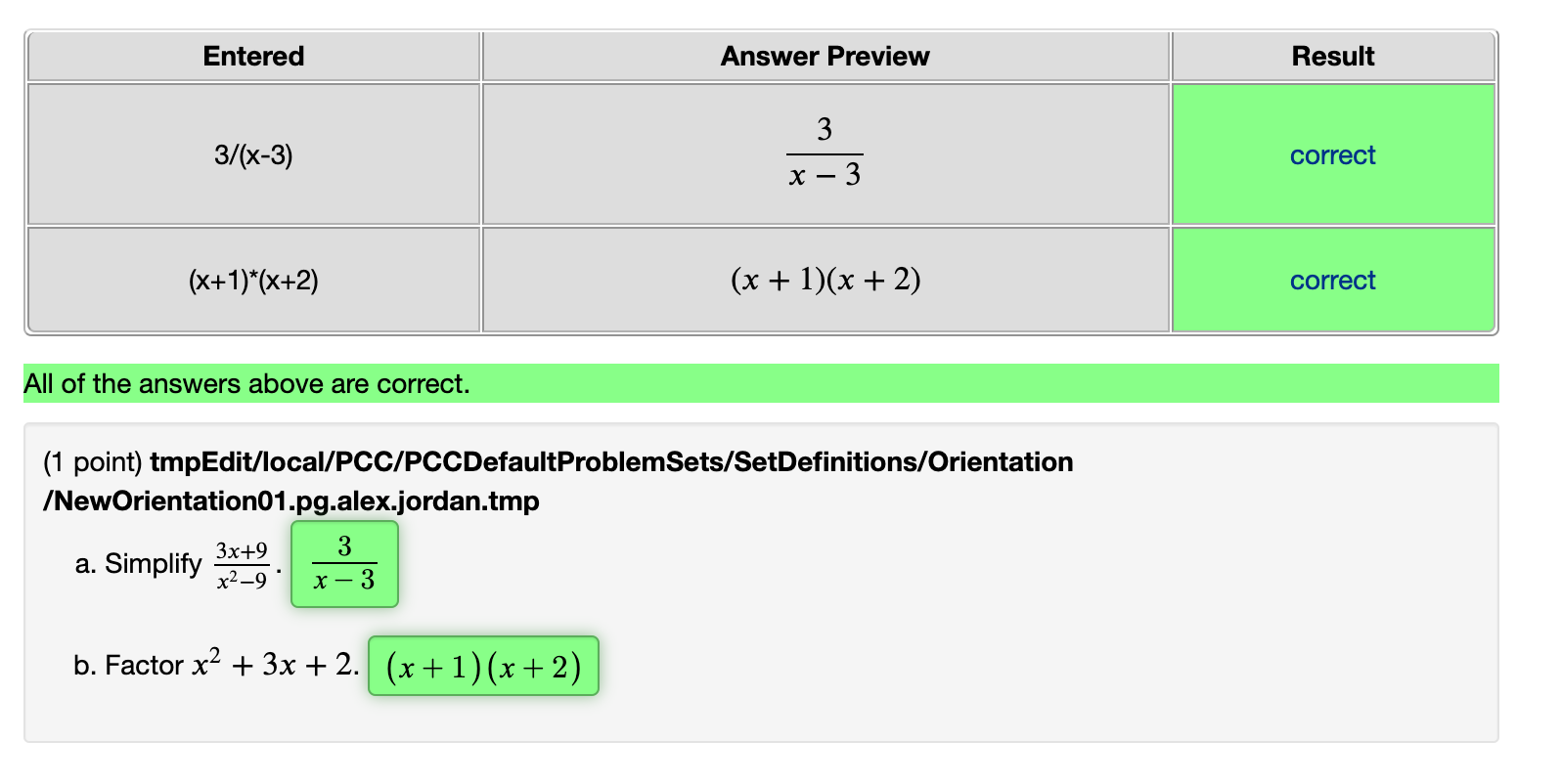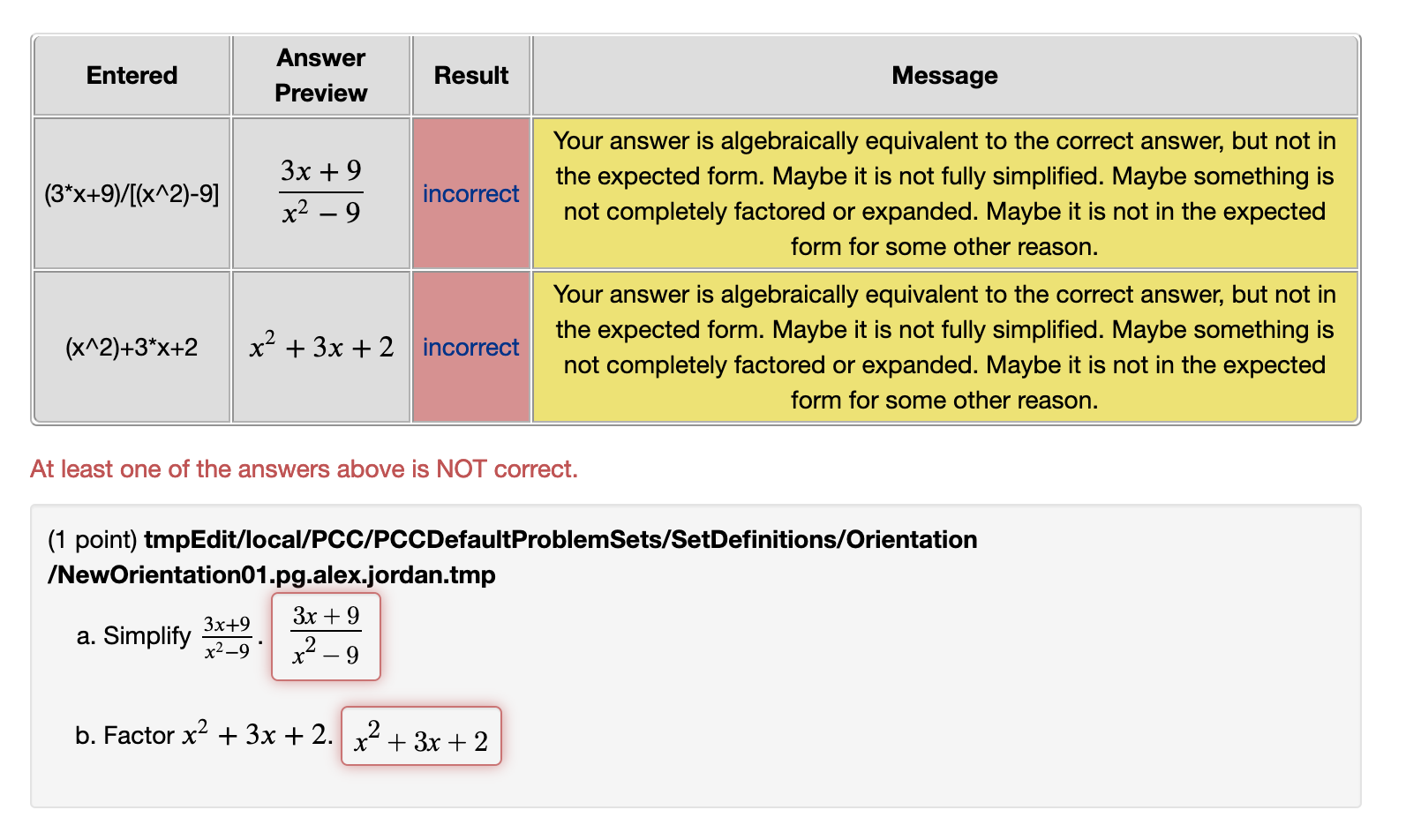I am trying out using Math Quill for entering answers this semester for the first time. Our problems involving the contextScientificNotation.pl are giving errors. I'm including a picture of the error and the problem code at the end of this note. Perhaps I'm just not using Math Quill correctly? I typed the answer in with the small x for the times.
--rac
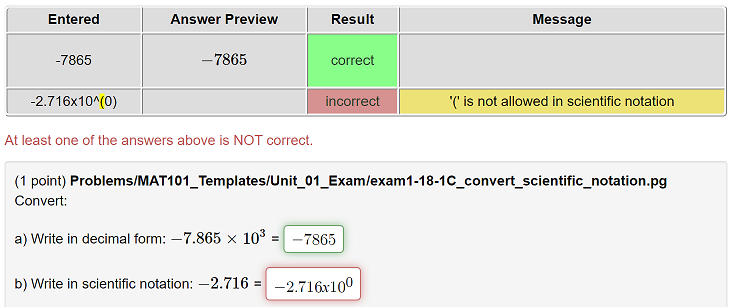
-------Problem code---------
DOCUMENT(); # This should be the first executable line in the problem.
loadMacros(
"PGstandard.pl",
"MathObjects.pl",
"PGchoicemacros.pl",
"contextScientificNotation.pl",
"contextLimitedNumeric.pl"
);
TEXT(beginproblem());
######################################
# Setup
$num0 = random(1.1,9,0.001);
$exp0 = random(2,4,1);
$num[0] = $num0 * 10**$exp0;
$num1 = random(1.1,9,0.001);
$exp1 = random(-3,-1,1);
$num[1] = $num1 * 10**$exp1;
$num2 = random(-9.5,-1.5,0.001);
$exp2 = random(2,4,1);
$num[2] = $num2 * 10**$exp2;
$num3 = random(-9.5,-1.5,0.001);
$exp3 = 0;
$num[3] = $num3 * 10**$exp3;
Context("LimitedNumeric");
$dec[0] = Compute("$num[0]")->reduce;
$dec[1] = Compute("$num[1]")->reduce;
$dec[2] = Compute("$num[2]")->reduce;
$dec[3] = Compute("$num[3]")->reduce;
Context("ScientificNotation");
$sn[0] = ScientificNotation($num[0]);
$sn[1] = ScientificNotation($num[1]);
$sn[2] = ScientificNotation($num[2]);
$sn[3] = ScientificNotation($num[3]);
($a,$b) = NchooseK(4,2);
######################################
# Main text
Context()->texStrings;
BEGIN_TEXT
Convert:
$PAR
a) Write in decimal form: \( $sn[$a] \) = \{ ans_rule(10) \}
$PAR
b) Write in scientific notation: \( $dec[$b]\) = \{ ans_rule(10) \}
END_TEXT
Context()->normalStrings;
######################################
# Answers
$ans_a = $dec[$a];
ANS($ans_a->cmp);
$ans_b = $sn[$b];
ANS($ans_b->cmp);
$showPartialCorrectAnswers = 1;
######################################
# Solutions
Context()->texStrings;
BEGIN_SOLUTION
$PAR Solution: $BR $BR
a) Write in decimal form: \( $sn[$a] \) = \( $dec[$a] \)
$PAR
b) Write in scientific notation: \( $dec[$b]\) = \( $sn[$b] \)
$BR
END_SOLUTION
Context()->normalStrings;
ENDDOCUMENT();

